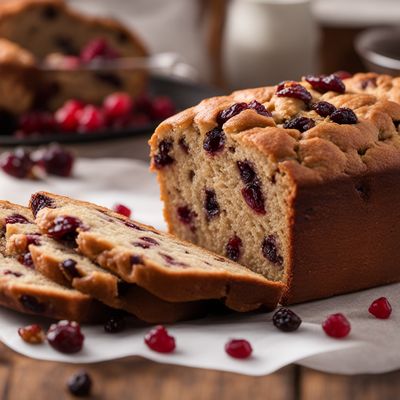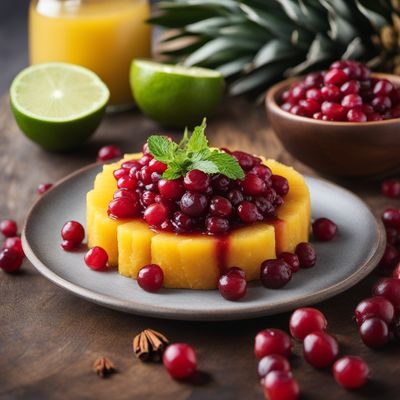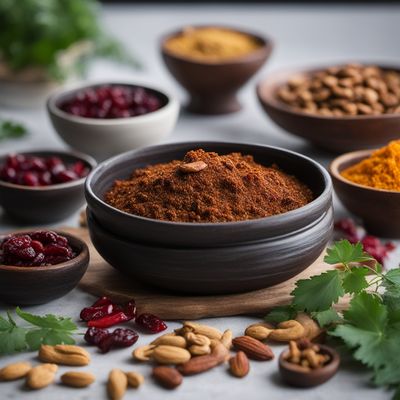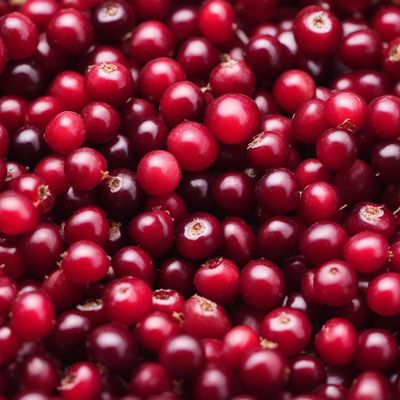
Ingredient
Cranberries
The Tart Jewel: Unveiling the Cranberry's Brilliance
Cranberries are small, tart berries that are native to North America. They grow on low-lying vines in acidic, sandy bogs or marshes. Historically, cranberries were used by Native Americans for their medicinal properties and as a food source. Today, they are widely cultivated in the United States and Canada, with Wisconsin being the largest producer. Cranberries have become synonymous with Thanksgiving and are often enjoyed in the form of cranberry sauce or juice during the holiday season.
Origins and history
Tart and slightly acidic, cranberries offer a unique flavor profile that is both refreshing and tangy. They have a vibrant red color and a firm texture, with a slight bounce when bitten into. Their appearance is reminiscent of small rubies, adding visual appeal to any dish they adorn.
Allergens
When selecting cranberries, look for ones that are firm and plump, with a deep red color. Avoid berries that are soft, shriveled, or discolored. Fresh cranberries should have a glossy skin and bounce back when pressed gently. If purchasing dried cranberries, ensure they are free from clumps and have a vibrant color. It's also worth noting that cranberries can be found fresh, frozen, dried, or in the form of juice or sauce, depending on your culinary needs.
How to select
Cranberries can be grown in home gardens, although they require specific growing conditions. They thrive in acidic soil and prefer cooler climates. If you have access to a bog or marshy area, you can create a suitable environment for cranberries. However, due to their specific requirements, it may be more practical to purchase cranberries from a store or farmers market.
Storage recommendations
Cranberries can be used in a variety of dishes, both sweet and savory. They are commonly used in sauces, relishes, and chutneys, adding a tangy element to complement rich meats or cheeses. Cranberries are also popular in baked goods, such as muffins, breads, and pies, where their tartness balances the sweetness of other ingredients. They can be incorporated into salads, grain dishes, or even cocktails, lending a burst of flavor and vibrant color. Experiment with different recipes to fully explore the versatility of cranberries.
How to produce
To prolong the shelf life of cranberries, store them in the refrigerator in a sealed container or bag. Fresh cranberries can be kept for several weeks when refrigerated. Dried cranberries should be stored in a cool, dry place away from direct sunlight. Cranberry sauce or juice can be stored in the refrigerator for up to a week, while commercially canned cranberry sauce can be stored for much longer. It's important to check the expiration dates and follow any storage instructions provided on the packaging.
Availability
Cranberries are widely available in grocery stores and supermarkets, especially during the fall and winter months. They are primarily cultivated in the United States and Canada, with Wisconsin, Massachusetts, and New Jersey being the top cranberry-producing states. Cranberries are also exported to various countries around the world, making them accessible to a global audience.
More ingredients from this category
Recipes using Cranberries » Browse all

IONA-inspired Hearty Oatmeal Porridge
Island Comfort: A Wholesome Twist on Traditional Porridge

Basque-inspired Zarda Rice
Basque Delight: A Colorful Twist on Zarda Rice

Vietnamese-inspired Florentines
Crispy Coconut Florentines with a Vietnamese Twist

Vegan Florentines
Deliciously Vegan Florentines: A Plant-Based Twist on a Classic Italian Treat

Inuit-Inspired Arctic Delight Maritozzo
Arctic Sweet Bread: A Taste of Inuit-Inspired Maritozzo

Quebecois Maple Barmbrack
Maple-infused Barmbrack: A Sweet Taste of Quebec

Cuban Florentines
Tropical Delight Florentines

Polynesian Pineapple Cranberry Chutney
Tropical Twist: Polynesian Pineapple Cranberry Chutney

Macanese Cuccidati
Spiced Macanese Delights: Macanese Cuccidati Recipe

Sylheti-inspired Pemmican
Sylheti Spice-infused Pemmican Delight

American Chinese Style Butter Tart
Sweet and Buttery Delight: American Chinese Style Butter Tart

Caribbean Florentines
Tropical Delight Florentines

